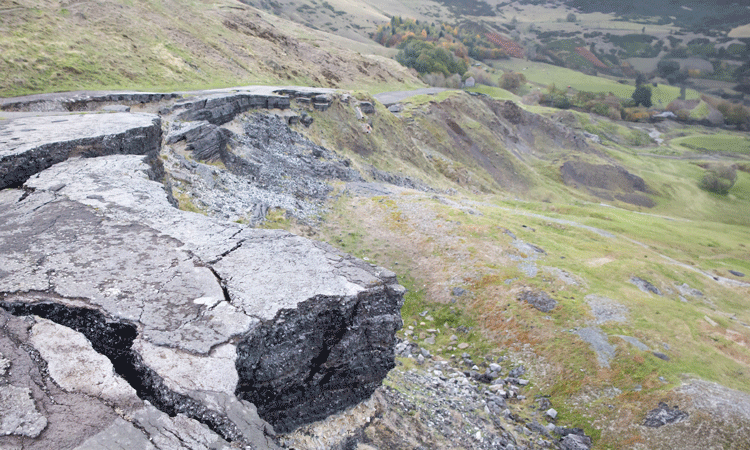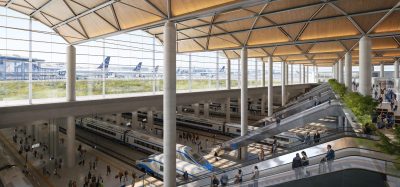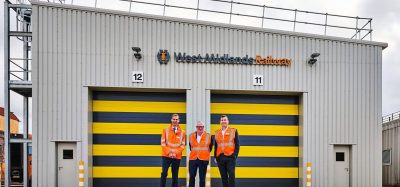How predictive maintenance thwarts potential landslip damage
Posted: 5 August 2024 | Emily Budgen | No comments yet
Global Railway Review’s Emily Budgen examines whether landslips might be prevented – a question of preventative maintenance for a common occurrence on railways.


As the Northern hemisphere emerges from its winter season, complete with rain, storms, and flooding, how can the rail industry prevent damage to tracks and other key infrastructures?
A landslip (or landslide) occurs when a portion of rock or earth is dislodged and falls, partially or fully covering railway tracks, causing delay and damage to varying degrees.
What causes a landslip and how are they damaging?
Landslips commonly occur when the earth is saturated with water, often after longer periods of rainfall. In the UK, where rain is part of our everyday charm, railway infrastructure planning processes must consider such levels of rainfall to prevent such circumstances.
Weather and climate resilience for rail assets should not be dismissed. Research conducted by the Great British Railways Transition Team (GBRTT) found that storms in autumn of 2023, quarter 4, caused the railways £21 million in lost revenue.
Even though this lost income only accounts for 0.8% of total rail passenger revenue for that quarter, ongoing and worsening climate change is projected to increase the severity and frequency of extreme weather.
Network Rail are a step ahead of the situation, however. The UK rail infrastructure organisation has committed to a five-year plan, with a significant budget allocation, improving their asset resilience.
While this involves a series of upgrades to existing infrastructure as well as including climate resilient features on new designs and projects, the sooner these are introduced the less serious the level of disruption and a less disgruntled customer base. Weather disruption is likely to have resulted in a slight decrease in business trips; in a quarter‑by‑quarter comparison, autumn saw a two million decrease in the number of trips. Nevertheless, as people returned from their summer holidays, there was an 11% increase in commuter journeys, boosting rail revenue by £47 million.
The ‘Great Fall’
However, landslips are not just a modern phenomenon. Even though their frequency is increasing, and is due to increase more with the consequences of climate change, landslips have affected rail infrastructure for over a century.
One such example is the ominously named ‘Great Fall’. This was an extreme landslip at Folkestone Warren in December 1915, where the railway line to Dover moved 50m towards the coast. 1.5 million cubic metres of chalk fell into the sea, which was preceded by a multi-week period of heavy rain. The line didn’t reopen until 11 August 1919, as the First World War delayed repairs.


The ‘Great Fall’ at Folkestone Warren. c: Network Rail
Photos from the landslip were discovered by Derek Butcher, a route asset manager at Network Rail, in a filing cabinet during an office move.
“We believe the train pictured was alerted to the landslip by the signal box at Folkestone Junction and was slowed down and found itself part on and part off the landslip. They were able to evacuate passengers who walked through the tunnel to Folkestone Junction station,” said Derek back in 2016.
“There was a significant amount of movement following the train stopping… That’s why it looks so horrific.”
Landslips on that section of railway have been recorded since the line opened in 1844. Unfortunately, two people died in 1877 when part of the Martello Tunnel was destroyed; the line remained closed for three months afterwards.
The last major landslip was recorded in 1939, but some ground movement has forced Network Rail to introduce speed restrictions.
“The landslip [at Folkestone Warren] is still active… There are a number of ways that movement is controlled. Firstly, we monitor the location extensively with settlement points on a monthly basis,” added Derek Butcher.
Network Rail have had to implement several changes on the route, in the interests of safety. One of these is light-detecting and ranging (LIDAR) technology, which uses laser scanning technique to record points on the landscape. The data is then used to work out if there are any movements from the earth.
Other methods include boring holes into the ground, to improve irrigation and drainage, and building walls to prevent landslips from embankments hitting the track.
How can landslips be prevented?
There are numerous solutions for landslip prevention. Back in 2020, Network Rail identified several areas which were prone to landslip disruption and damage and found practical solutions.
One such case was in Cumbria, where engineers upgraded the embankments along the railway line. Work included reducing the steepness of the embankments, as well as ensuring the earth was secure at two stretches of the railway, one near Oxenholme and the other near Carlisle. These new embankments are composed of ash and local material, excavated nearby, to match the landscape.


c: Peacock Precision Services Ltd, Network Rail
Richard Hockney, a project manager at Network Rail, speaking in 2020, said: “This essential work as park of the Great North Rail Project will make this busy passenger and freight route more reliable in the future.
“Our teams have worked hard to secure a total of 1.5km of embankment over the last few months, working around challenges brought on by COVID-19.”
In Anglia, Network Rail took a different approach. Heavy rain in the area caused an embankment to slip between Colne and Bures at the start of 2020. It took the engineers over 11 weeks to clear the earth and debris, supporting the embankment and building a wall, using nearly 200 tonnes of material.
The irrigation of the land, nonetheless, needed to be adjusted as part of the preventative measures. This included fitting the embankments with new drainage systems and taking the water away from the banks and the track, preventing oversaturation of the earth and flooding on the track. As the area was home to many badgers, Network Rail were sure to design and plan their maintenance so as not to disturb or harm the setts.


c: Network Rail
In the south of England, around Templecombe, Gillingham and Sherborne, Network Rail completed works to stabilise the ground, as part of the same project. Instead of levelling the embankments, works included inserting four metre steel nails into the slope at Templecombe to stabilise the cutting to prevent further landslips, building a 40m gabion (cages filled with rocks), at the bottom of the cutting for extra protection, before installing 400m of new track near Gillingham for extra protection.
While landslips are nothing new, as seen with the pictured destruction of ‘The Great Fall’ from 1915, the rail industry must plan for their increased frequency. With the effects of climate change becoming more apparent every year, the rail industry must either find adaptations for existing infrastructure to make it more climate resilient or start implementing such maintenance features in the design process.
Global Railway Review Autumn/ Winter Issue 2025
Welcome to 2025’s Autumn/ Winter issue of Global Railway Review!
The dynamism of our sector has never been more apparent, driven by technological leaps, evolving societal demands, and an urgent global imperative for sustainable solutions.
>>> Read the issue in full now! <<<







